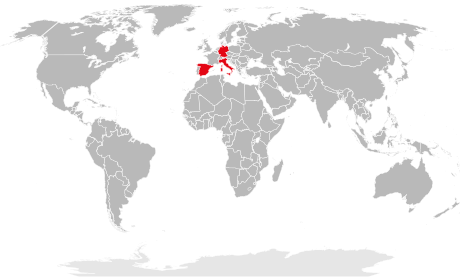










There’s more to pears than meets the eye – there are summer, autumn and winter pears, dessert pears, cider pears (for juice production) and cooking pears (for compote). And then there is a type of dessert pear which has a particularly delicate skin, also known as a butter pear. Like apples, pears also belong to the Malinae subtribe within the rose family (Rosaceae).
Pears originate – so we believe – from Caucasus and Anatolia. Today, they are grown in both the northern and southern hemispheres - provided it is warm and the soil is full of nutrients. The main cultivation areas – in addition to China (c. 40% of global production) – are Italy, the USA, Spain, Argentina, Japan, Turkey, France, Ukraine, Chile, South Africa and also Germany.